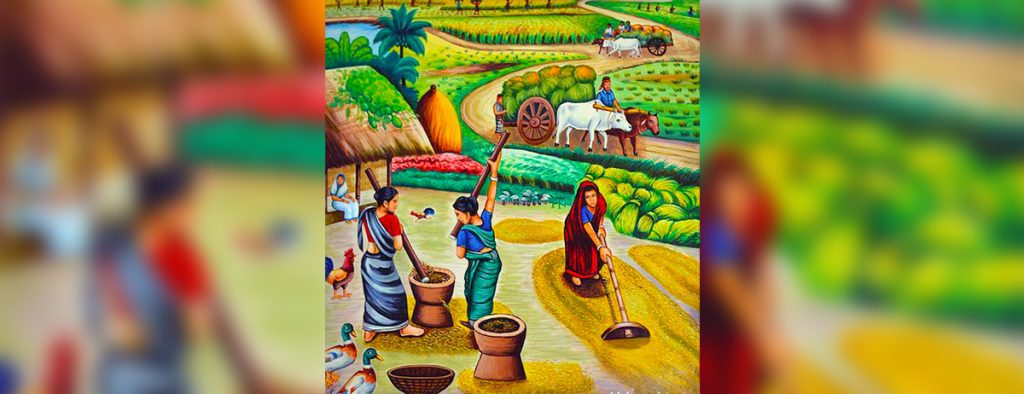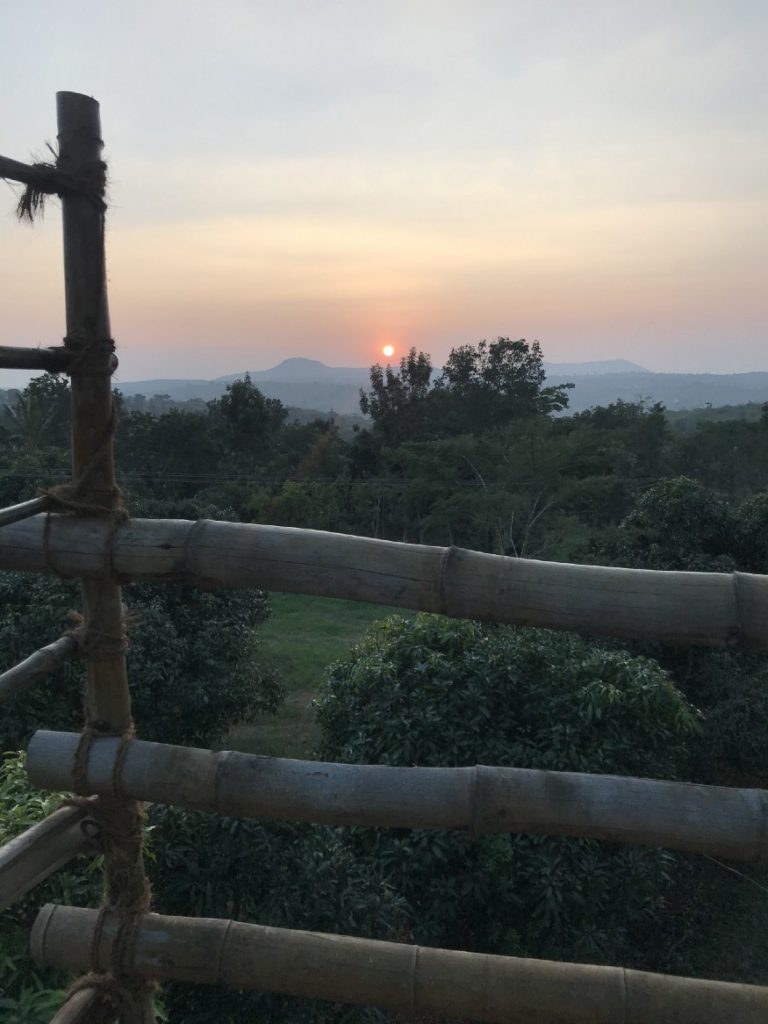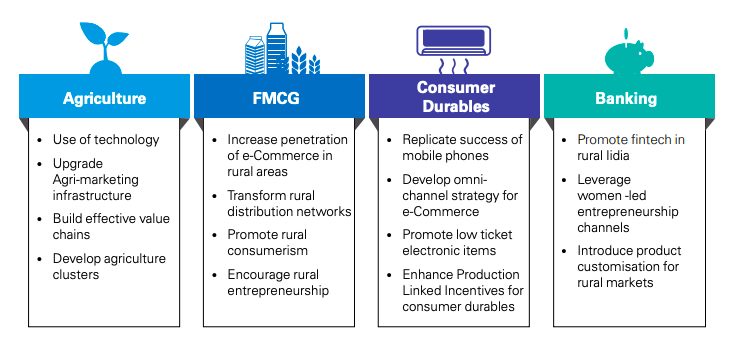
Food is a major economic commodity, but only a few countries actually excel at food production. Most agricultural products require a lot of land, which only the largest countries have in abundance. In fact, the world’s four dominant food-producing countries all rank in the top five for total geographic size.
Over the last week, I had the amazing opportunity of spending a week in a village named Thalli in the border of Karnataka and Tamil Nadu. I thoroughly enjoyed being able to embrace the silent stillness of village life. I spent my time going on long runs through the forest and bathing in waterfalls that were gushing with dew from the valley. These experiences definitely resulted in a significant boost in my energy levels.
I also decided to get my hands dirty and help out in the everyday farming and cattle maintenance activities in the farm that I was living in. These were extremely humbling experiences and they will always have a special place in my heart.

As I sat on this tree house reflecting away, I could not help but be struck by the profound difference between the life we live in cities, as opposed to the life that individuals experience in remote parts of the world.
Life in cities and “first world countries” only goes as far as telling us that the food we get, comes from the neighbourhood supermarket, but we spend little to no time thinking about the time and effort required to plant, grow and harvest the food that we take for granted on an every day basis.
But, why should we even need to think about it?
Put in bluntly apocalyptic terms, this planet must produce more food in the next four decades than all farmers have in the past 8,000 years. That’s because by 2050, the Earth will be home to as many as 10 billion humans, up from today’s 7.5 billion. If massive increases in agricultural yield are not achieved, a billion or more people may face starvation.
India’s role in feeding the world
A current snapshot :
With a population of 1.27 billion, India is the world’s second most populous country. It is the seventh largest country in the world with an area of 3.288 million sq kms. It has a long coastline of over 7,500 kms. With the highest mountain range in the world, the Himalayas to its North, the Thar desert to its West, the Gangetic delta to its East and the Deccan Plateau in the South, the country is home to a vast agro-ecological diversity. This has made India the country with second most irrigated land available in the world. India has close to 667,000 square kilometres of land being irrigated as of 2020.
Agriculture is the primary source of livelihood for about 58% of India’s population. The gross Value Added (GVA) by agriculture, forestry and fishing was estimated at US$ 276.37 billion in FY20. Growth in GVA in agriculture and allied sectors stood at 4% in FY20.
India is currently among the 15 leading exporters of agricultural products in the world. Agricultural export from India reached US$ 38.54 billion in FY19 and US$ 35.09 billion in FY20, this accounts for 2.2% of world food exports. Even during the turbulent times of the COVID-19 lockdown, India did not disturb the world food supply chain and continued to export smoothly as per government reports.
According to the Department for Promotion of Industry and Internal Trade (DPIIT), the Indian food processing industry has cumulatively attracted Foreign Direct Investment (FDI) equity inflow of about US$ 10.15 billion between April 2000 and June 2020.
Some of the major investments and developments were as follows :
- In March 2020, FACT, the oldest large‑scale fertiliser manufacturer in the country, crossed one million in their production and sales mark.
- Nestle India will invest US$ 100.16 million in construction of its ninth factory in Gujarat.
- In November 2019, Haldiram entered into an agreement for Amazon’s global selling program to E-tail its delicacies in the United States.
Some of the recent major Government initiatives taken in the sector are as follows:
- In October 2020, the Tribal Cooperative Marketing Development Federation of India (TRIFED) included 100 new Forest Fresh Organic Products sourced from tribes across India on its e-marketplace (tribesindia.com).
- In October 2020, Agri-lender Nabard (National Bank for Agriculture and Rural Development) proposed plans to set up a subsidiary to provide guarantee for loans under agriculture and rural development.
- In October 2020, the government announced that it is putting up a common data infrastructure for farmers in the country. PMFBY (Pradhan Mantri Fasal Bima Yojana), PM-Kisan and the Soil Health Card will be integrated through a common database, along with land record details.
- In September 2020, the government launched the PM Matsya Sampada Yojana, e-Gopala App and several initiatives in fisheries production, dairy, animal husbandry and agriculture. Under this scheme, an investment of Rs. 20,000 crore (US$ 2.7 billion) will be made in the next 4–5 years in 21 states.
- In May 2020, Government announced the launch of animal husbandry infrastructure development fund of Rs. 15,000 crore (US$ 2.13 billion).
- In September 2019, Prime Minister, Mr. Narendra Modi launched National Animal Disease Control Programme (NADCP), expected to eradicate foot and mouth disease (FMD) and brucellosis in livestock. In May 2020, Rs. 13,343 crore (US$ 1.89 billion) was allocated to the scheme.
- The Government of India came out with Transport and Marketing Assistance (TMA) scheme to provide financial assistance for transport and marketing of agriculture products in order to boost agriculture exports.
- The Agriculture Export Policy, 2018 was approved by the Government of India in December 2018. The new policy aimed to increase India’s agricultural export to US$ 60 billion by 2022 and US$ 100 billion in the next few years with a stable trade policy regime.
- The Government of India is going to provide Rs. 2,000 crore (US$ 306.29 million) for computerization of Primary Agricultural Credit Society (PACS) to ensure cooperatives are benefitted through digital technology.
- The Government of India launched the Pradhan Mantri Krishi Sinchai Yojana (PMKSY) with an investment of Rs. 50,000 crore (US$ 7.7 billion) aimed at development of irrigation sources for providing a permanent solution from drought.
- Government plans to triple the capacity of food processing sector in India from the current 10% of agriculture produce and has also committed Rs. 6,000 crore (US$ 936.38 billion) as investments for mega food parks in the country, as a part of the Scheme for Agro-Marine Processing and Development of Agro-Processing Clusters (SAMPADA).
- The Government of India has allowed 100% FDI in marketing of food products and in food product E-commerce under the automatic route.
In a nutshell, over the course of the future, the development of rural India as an economic superpower will rely on the following developments in the agriculture, FMCG, consumer durables and banking space :

In conclusion, I believe that with more people realising the value of living a sustainable life, we will see a wave of people moving away from cities in hope of finding a quieter life that is more in tune with nature.
In order for this monumental shift to happen smoothly, we will definitely need to see large scale collaboration from governments, individuals and corporations.
The human species as a whole will need to make sure that we use the natural resources provided to us, in a more responsible and innovative way. Only then, will we see a world where we as individuals will be judged by who we are and not by how much we produce.
Reach us for Web design | App Design | Domain, Hosting, Email, Devops | Marketing collaterals | Digital Marketing
For more details reach us at [email protected]
